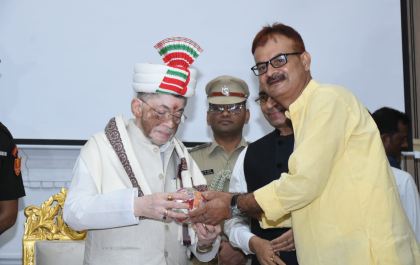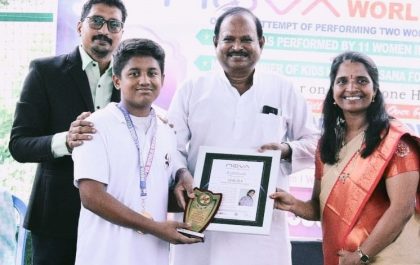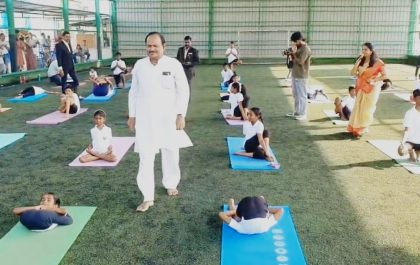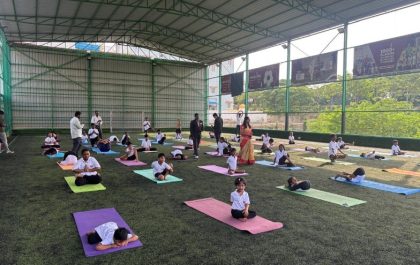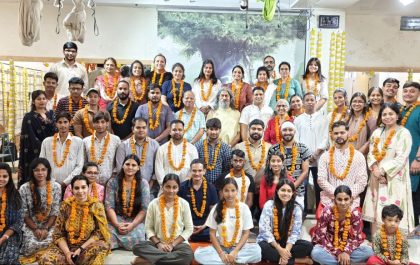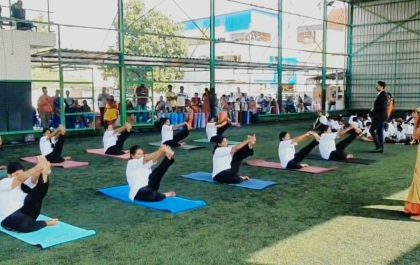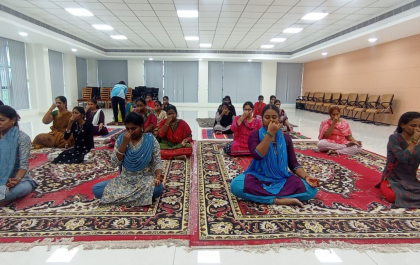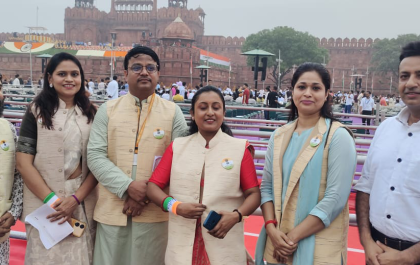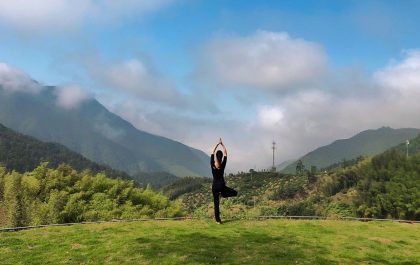Research is extremely important to support different approaches to health care. In the recent past, Yoga has been gaining lot of attention as Yoga Institutes, reseachers, scholars have started offering substantive clinical research evidence. In this issue, Indian Yoga Association brings to you the Research Papers published by our Member Institutes and other Institutes or individuals on Pranayama and COVID-19
International Centre for Yoga Education and Research (ICYER)
Immediate Effect of Sukha Pranayama on Cardiovascular Variables in Patients of Hypertension
Author: Dr Ananda Balayogi Bhavanani
Published In: International Journal of Yoga Therapy
Published On: 2011
Abstract: Hypertension is one of the most common health disorders, and yoga has been shown to be an effective adjunct therapy in its management. Earlier studies have reported blood pressure (BP)-lowering effects of slow, deep breathing after 3 weeks and 3 months of training and beneficial immediate effects of slow, deep breathing in reducing premature ventricular complexes and lowering blood pressure. None of these immediate studies used the concept of pranayama, involving conscious internal awareness of the whole breathing process. This study was undertaken to determine the immediate cardiovascular effects of sukha pranayama in hypertensive patients.
Twenty-three hypertensive patients attending the Yoga OPD at JIPMER were recruited for the study and instructed to perform sukha pranayama for 5 minutes at the rate of 6 breaths/min. This pranayama involves conscious, slow and deep breathing with equal duration for inhalation and exhalation. Heart rate (HR) and BP were recorded before and immediately after the intervention. Results: Post-intervention statistical analysis revealed a significant (p < .05) reduction in HR and a highly significant (p < .001) reduction in systolic pressure, pulse pressure, mean arterial pressure, rate-pressure product, and double product with an insignificant fall in diastolic pressure.
It is concluded that sukha pranayama at the rate of 6 breaths/minute can reduce HR and BP in hypertensive patients within 5 minutes of practice. This may be due to a normalization of autonomic cardiovascular rhythms as a result of increased vagal modulation and/or decreased sympathetic activity and improved baroreflex sensitivity. Further studies are required to understand possible mechanisms underlying this beneficial immediate effect and to determine how long such a beneficial effect persists.
Kaivalyadhama
Integrated therapy as a tool to help fight asymptomatic COVID-19: A case report
Author: Subodh Tiwari, Shruti Sharma and Anita Verma
Published In: Integrative Medicine Case Reports
Published On: July 2021
Abstract: COVID-19 is a rapidly changing and evolving situation and is extremely challenging to the humankind since it is highly infectious. Around 80% of the COVID-19 patients are asymptomatic but still need special care so that they don’t develop any further serious complications in due course of infection. The aim of present case study was to assess the effect of integrated therapy of yoga and Ayurveda on vital parameters of a COVID-19 positive asymptomatic patient. He was found to be COVID-19 positive with ORF CT value of 29.85. He remained asymptomatic throughout the course of disease. Vital parameters such as body temperature, oxygen saturation, and heart rate remained optimal throughout the course of infection. This was probably due to physical activity such as walking, yoga and Ayurvedic medications which helped in building of immunity. This further prevented progression of the disease to moderate/severe stage and there were no unanticipated events. The patient was rechecked after 8 days and was found to be COVID-19 negative. This implies that Yoga and Ayurveda treatment is effective in controlling symptoms of COVID-19 and prevention of disease progression.
Patanjali Research Foundation, Haridwar, Uttarakhand
Body Temperature in Practitioners of a Yoga Breathing Technique Considered to be Heat Generating
Author: Kumar Gandharva, Ram Kumar Gupta, Shirley Telles and Sachin Kumar Sharma
Published In: International Journal of Yoga 13(2):168
Published On: May 2020
Abstract: Suryabhedapranayama is traditionally described as “increasing the inner fire” and is believed to be heat generating. Aims: The present study aimed at determining whether the surface body temperature would increase after Suryabheda pranayama practice compared with sitting quietly for the same duration as a control. Materials and methods: Nineteen participants with experience of Suryabheda pranayama practice (group mean experience ± standard deviation, 30.2 ± 22.8 months) were assessed in 3 sessions on separate days. The sessions were (i) Suryabhedapranayama with physiological locks or breath retention, (ii) Suryabhedapranayama without physiological locks or breath retention, and (iii) quiet sitting (control session). The axillary surface body temperature was monitored in all three sessions before (5 min), during (15 min), and after (5 min) the intervention. Ambient temperature and humidity in the recording cabin used for testing were noted. From the ambient temperature and humidity, the heat index was derived. Statistical analysis: Repeated measures analyses of variance were performed to compare values before, during, and after the 3 sessions, using SPSS version 24.0. Results: The surface body temperature increased during and after Suryabheda pranayama with physiological locks (P < 0.001; P < 0.001), Suryabhedapranayama without physiological locks (P < 0.01; P < 0.001), and quiet sitting (P < 0.001; P < 0.001) compared to the respective before values. Conclusion: The control (i.e., quiet sitting) and experimental sessions (i.e., suryabheda with locks and suryabheda without locks) showed a comparable increase in the surface body temperature. Hence, the increase in surface body temperature during and after experimental sessions does not appear to be related to the pranayama techniques. The possible factors which may have contributed to increased surface body temperature in the control and experimental sessions have been discussed.
Swami Vivekananda Yoga Anusandhana Samsthana (SVYASA)
Pranayama increases grip strength without
lateralized effects
Author: Raghuraj P, Nagarathna R, Nagendra HR, Telles S
Published In: Indian Journal of Physiology and Pharmacology
Published On: April 1, 1997
Abstract: The present study was conducted to determine whether breathing through a particular nostril has a lateralized effect on hand grip strength. 130 right hand dominant, school children between 11 and 18 yrs of age were randomly assigned to 5 groups. Each group had a specific yoga practice in addition to the regular program for a 10 day yoga camp. The practices were: (1) right-, (2) left-, (3) alternate- nostril breathing (4), breath awareness and (5) practice of mudras. Hand grip strength of both hands was assessed initially and at the end of 10 days for all 5 groups. The right-, left- and alternate-nostril breathing groups had a significant increase in grip strength of both hands, ranging from 4.1% to 6.5%, at the end of the camp though without any lateralization effect. The breath awareness and mudra groups showed no change. Hence the present results suggest that yoga breathing through a particular nostril, or through alternate nostrils increases hand grip strength of both hands without lateralization.
Disclaimer: The Research Papers have been selected by the Yogavani Content Team from a Google search for ‘Pranayama and COVID-19’
